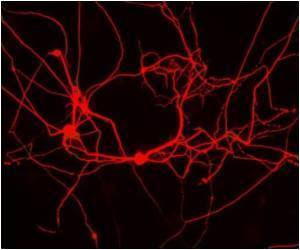Researchers at Case Western Reserve University have developed a computer modeling method to accurately predict how a peripheral nerve axon responds to electrical stimuli, slashing

To increase the accuracy of the results, the researchers included a key parameter overlooked in past mathematical approaches that were equally fast, but inaccurate. With the new techniques, electrode design can be optimized using advanced algorithms based on natural genetics.
An explanation of the work, which the team hopes others in the field will freely use, and a second method that was simpler and faster but proved less effective, are now available online in the Journal of Neural Engineering.
"We believe this will allow the next generation of computer-aided development of electrodes," said Dustin Tyler, associate professor of biomedical engineering at Case School of Engineering and senior author of the paper.
Since his graduate school days, Tyler has been developing electrodes to stimulate nerves in paralyzed patients and amputees. Taking the large step from animal models to human clinical trials can be improved with better computer modeling, he said.
"Finding the optimal way to stimulate a nerve is kind of like the 'travelling salesman' trying to figure out which is the most efficient route through a group of cities," Tyler said.
Advertisement
But, using a complex mathematical formula called a genetic algorithm to simultaneously consider all the routes, or in Tyler's predicament electrode designs, and determining the best requires that each design be evaluated in fractions of seconds. This was not possible previously.
Advertisement
By adding a variable: the magnitude of the voltage outside the cell produced by the electrode, Tyler's group raised the accuracy beyond current techinques.
They used the free-online nerve simulation environment NEURON developed at Yale University. The data the team used is included in the supplemental materials of their paper and may be downloaded for free, said Erik Petersen, a PhD student at Case Western Reserve and lead author. The third author is Oliver Izad, a former master's student in Tyler's lab.
Their method was developed specifically for peripheral motor nerve axons. Nerves cells with different structures, such as those in the brain, spinal cord, or organs are still being investigated.
The researchers are now developing parameters that would take into account these variations in structure to extend the method to work for all of them, further cutting time needed to develop accurate models.
Source-Eurekalert









